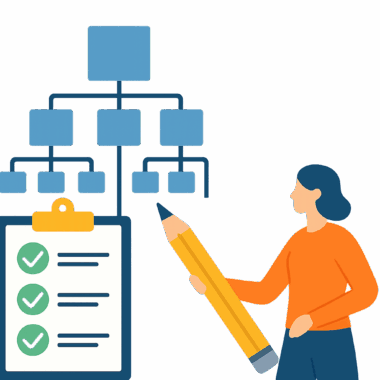

How to Build a Scalable Affiliate Program from Scratch

Content:
- Step 1: Define Your Goals and Target Audience
- Step 2: Choose the Right Commission Model
- Step 3: Select Your Affiliate Management Infrastructure
- Step 4: Develop Onboarding and Partner Resources
- Step 5: Recruit Affiliates Strategically
- Step 6: Set Up Tracking, Attribution, and Postbacks
- Step 7: Monitor Performance and Optimize
- Step 8: Scale With Automation and Partner Tiers
- Common Mistakes to Avoid
- Conclusion
- FAQ
Launching a scalable affiliate program from scratch requires more than signing up affiliates and sending links. It demands strategic planning, a robust tech stack, and a data-centric mindset. As customer acquisition costs continue to rise, affiliate marketing remains one of the most cost-efficient and performance-driven channels. The key lies in building a system that grows with your business.
In this guide, we outline the critical steps to create a scalable, high-performance affiliate infrastructure—from goal setting to automation. Each phase is designed to ensure transparency, operational efficiency, and long-term partner satisfaction.
Step 1: Define Your Goals and Target Audience
Before writing your first tracking link, clarify what your affiliate program is supposed to achieve. Are you targeting signups, purchases, app installs, or recurring subscriptions? Establish KPIs that align with your business model, such as Customer Acquisition Cost (CAC), First-Time Deposits (FTD), or Lifetime Value (LTV).
Equally important is defining your target audience. Understand who your ideal customers are, which channels they use, and which types of affiliates can reach them most effectively. A clearly segmented audience profile allows for better partner targeting, messaging, and ROI measurement.
Step 2: Choose the Right Commission Model
Your payout structure is the foundation of your affiliate program's attractiveness and sustainability. Common models include:
- CPA (Cost Per Acquisition): One-time payment per qualified action (e.g., sale, deposit)
- CPL (Cost Per Lead): Payment for valid signups or registrations
- Revenue Share (RevShare): Ongoing percentage of the customer’s spend
- Hybrid Models: Combination of upfront CPA and long-term RevShare
Choose a model based on your margins, cash flow, and product lifecycle. For example, RevShare works well in iGaming or SaaS, while CPA suits eCommerce or DTC brands seeking predictable costs.
Step 3: Select Your Affiliate Management Infrastructure
Your technology stack will determine how efficiently you manage partners, track results, and scale. You can either:
- Build a custom platform (high upfront cost, full control)
- Use a third-party SaaS solution (fast deployment, lower cost)
One of the most robust affiliate platforms is IREV, designed for high-performance programs. It supports:
- Advanced tracking with S2S and SubIDs
- Real-time analytics and fraud protection
- Custom commission logic and partner segmentation
- White-labeled dashboards and branded onboarding
Selecting a platform like IREV reduces manual overhead, ensures scalability, and improves reporting accuracy.
Step 4: Develop Onboarding and Partner Resources
To attract and retain quality affiliates, offer professional onboarding and marketing materials. Provide:
- A partner handbook with terms, tracking setup, and payout details
- Ready-to-use creatives: banners, email swipes, landing pages
- Tracking tutorials and API documentation (if relevant)
Affiliates are more likely to promote your product if you make it easy for them to start. Invest in documentation, onboarding flows, and a knowledge base. This improves time-to-activation and partner loyalty.
Step 5: Recruit Affiliates Strategically
Finding affiliates who convert is harder than launching the platform. Focus on quality over volume. Strategies include:
- Outreach via LinkedIn, forums, and email
- Joining affiliate marketplaces and directories
- Networking at niche conferences and expos
- Partnering with media buyers, influencers, and content creators
Always vet your affiliates. Review traffic quality, compliance history, and geo-targeting capabilities. This prevents fraud, improves ROI, and strengthens brand integrity.
Step 6: Set Up Tracking, Attribution, and Postbacks
Tracking is the backbone of affiliate operations. For accuracy and scalability, implement:
- Server-to-server (S2S) tracking: Secure and cookie-independent
- Dynamic SubIDs: Capture traffic source, campaign ID, creative
- Automated postbacks: Send conversion events back to affiliates
Ensure every event—click, signup, sale—is traceable. Accurate attribution builds trust, enables performance-based payouts, and informs optimization decisions.
Step 7: Monitor Performance and Optimize
Once traffic starts flowing, you must monitor and optimize constantly. Leverage:
- Real-time dashboards to track key metrics
- A/B testing of creatives, landers, and CTAs
- Smart alerts for traffic spikes, fraud patterns, or underperformance
- Automated rules to pause poor campaigns or adjust bids
Optimization should be continuous. Use data to make fast decisions and iterate based on results. The faster you analyze, the quicker you scale.
Step 8: Scale With Automation and Partner Tiers
Manual management won’t work at scale. To grow efficiently:
- Automate payouts, communication, and reporting
- Use rule-based logic for partner promotions or deactivations
- Introduce partner tiers (e.g., Bronze, Silver, Gold) with increasing benefits
Tiered systems motivate affiliates to perform better and streamline support and payouts. Automation frees up your team to focus on strategy, not spreadsheets.
Common Mistakes to Avoid
Avoid these common pitfalls when building your program:
- No tracking or reliance on outdated JS-based systems
- Vague commission rules and unclear onboarding
- Accepting affiliates without due diligence
- No fraud monitoring or traffic quality checks
- Ignoring data and optimizing based on guesswork
Preventing these issues early will save time, money, and brand reputation.
Conclusion
Building a scalable affiliate program requires structure, not improvisation. From choosing the right tech to setting clear KPIs and empowering partners with data, every step matters. A scalable program is not just about growth—it's about consistency, transparency, and performance.
Solutions like IREV allow businesses to launch and grow affiliate ecosystems with tracking integrity, automation, and partner trust. With the right foundation, your affiliate channel can become one of your most profitable growth engines.
FAQ
How long does it take to build a scalable affiliate program?
Typically 2-3 months for full setup, onboarding, and campaign testing.
Which commission model is best?
Depends on your business. CPA for short-term ROI; RevShare for lifetime value.
Do I need an affiliate manager?
Yes. A dedicated manager ensures partner success and handles communication, QA, and optimization.
Can I launch without a platform like IREV?
Possible, but scaling is difficult without proper tracking, automation, and fraud controls.
How do I attract top affiliates?
Offer competitive payouts, clear onboarding, real-time reporting, and consistent communication.

How to Find Competitors’ Affiliates Effectively with 9 Easy Ways
In the increasingly competitive world of affiliate marketing, knowing who promotes your competitors can offer a decisive edge. Understanding which affiliates are driving traffic and conversions for rival brands enables you to reverse-engineer their success and identify high-potential partnership opportunities.

The Role of Data and Analytics in iGaming Affiliate Success
Data is not just about numbers—it’s about understanding user behavior, optimizing traffic flows, and ensuring measurable ROI. In affiliate programs where every click and deposit count, a structured data strategy empowers stakeholders to identify trends, eliminate inefficiencies, and scale campaigns with precision.




